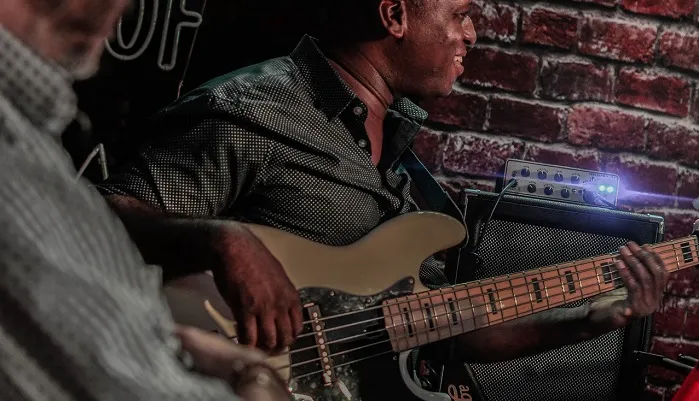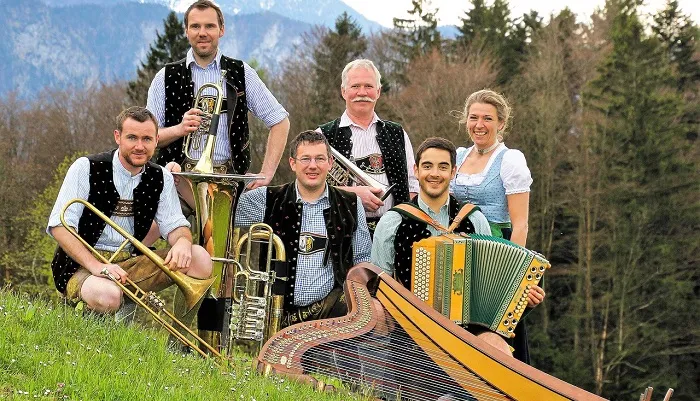A music genre is a category of music belonging to a shared collection of conventions. It’s distinguished from musical form and musical style, although these terms are often used interchangeably in practice.
Music can be categorized into several genres, such as popular music and art music, sacred music, and secular music. Music’s imaginative nature means that these classifications are arbitrary and divisive.
Some genres can overlap. Even the academic meaning of the term “genre” itself differs.
Musicologists have often categorized music according to a trichotomous distinction, such as Philip Tagg’s “axiomatic triangle,” consisting of ‘Folk’, ‘Art’ and ‘Popular’ (or Pop) music.
Alternatively, music can be measured on the three dimensions of “arousal,” “valence” and “depth.” Arousal represents physiological mechanisms such as arousal and relaxation (intense, vigorous, abrasive, exciting vs. gentle, mellow).
Valence reflects the emotion and mood processes (fun, happy, lively, enthusiastic, joyful vs. depressing, sad). Depth represents cognitive processes (intelligent, sophisticated, inspirational, nuanced, poetic, deep, emotional, reflective vs. party music, danceable), which helps explain why many people like similar songs from various historically separated genres.
Rock Music
Rock, also known as Rock and Roll, Rock & Roll, or Rock ‘n’ Roll, is a popular music genre from the 1950s. It can definitely be argued that by the end of the 20th century, Rock was the dominant genre of popular music.
It originated in the United States in the 1950s and spread to other English-speaking countries and throughout Europe in the 1960s. Its influence was visible worldwide in the 1990s.
Rock’s economic value was expressed in the structure of the multinational music industry, in the sales racks of international album stores, and the playlist strategies of radio and television.
If other forms of music – Classical, Jazz, easy listening, Country, Folk, etc. – are sold as minority interests, Rock determines mainstream music. So, over the past half of the 20th-century, music labels have been the most inclusive. To appreciate the cultural value of Rock, one needs to understand how it functions both socially and musically.
Electronic Music
Electronic music is a genre that requires electronic processing, such as tape recording and editing, and replication, which involves loudspeakers.
While any music generated or modified by electrical, electromechanical, or electronic means can be considered Electronic music, it is more precise to state that, for a piece of music to be electronic, the composer must predict the electronic processing subsequently added to its musical concept. So, the final result represents the relationship of the composer with the medium.
A wide range of sound resources creates Electronic music – from sounds captured by microphones to those produced by electronic oscillators, sophisticated device installations, and microprocessors. Generally, except one music genre performed that has come to be considered “live electronic music,” Electronic music is played either by loudspeakers alone or in association with ordinary musical instruments.
Electronic music is represented by a wide range of works from the 20th-century. This includes serious concert works, extensive stage, film and television literature, and digital works using all sorts of audio-visual techniques. Electronic theatre and film music tend to be a highly apt alternative for the disembodied, non-existent orchestra heard from a tape or soundtrack.
Soul Music
Soul music is a popular music genre that emerged in the African-American community in the United States in the 1950s and early 1960s. It incorporates elements of African-American Gospel music, Rhythm and Blues, and Jazz.
Soul music became more popular for dancing and listening when record labels such as Motown, Atlantic, and Stax became prominent during the Civil Rights Movement. Soul has since been popular worldwide, with a direct influence on both Rock and African music.
As per the Rock and Roll Hall of Fame, Soul is “music that arose out of the black experience in America through the transmutation of Gospel and Rhythm and Blues into a form of funky, secular testifying.” Catchy beats, stressed by handclaps and extemporaneous body movements, are an important aspect of Soul music. Such features are the call and response between the lead vocalist and the chorus and a particularly strained vocal tone.
At times, the style also uses improvisational additions, twirls and auxiliary sounds. Soul music both represented and perfectly highlighted the importance of the African-American culture. Newfound African-American consciousness has contributed to new forms of music that boast black identity.
Soul music has dominated the U.S. By 1968, the Soul music genre had begun to split. Some Soul musicians developed Funk songs, while other singers and groups developed slicker, more complex, and more politically aware forms.
In the early 1970s, Soul music was inspired by Acid Rock and other styles, contributing to a Psychedelic Soul. The United States saw the development of the Neo-Soul around 1994. There are also many other Soul music subgenres and offshoots.
The various subgenres of soul music are:
- Detroit (Motown) Soul.
- Deep Soul.
- Southern Soul.
- Memphis Soul.
- Birmingham Soul.
- New Orleans Soul.
- Chicago Soul.
- Philadelphia Soul.
- Psychedelic Soul.
- British Soul.
- Neo-Soul.
- Northern Soul.
- Modern Soul.
- Hypersoul.
- Nu-Jazz.
- and soul-influenced Electronica.
Funk
Funk is a music genre that emerged in African-American communities in the mid-1960s, where artists created a rhythmic, danceable modern style of music with a fusion of Soul, Jazz, and Rhythm and Blues (R&B). Funk concentrates on the strong rhythm of the bass line played by the electric bass player and the drum, sometimes at slower tempos than most popular music.
Funk usually includes a complex groove with rhythm instruments playing interlocking grooves that create a “hypnotic” and “danceable” sound. Funk uses the same richly-coloured chords used in Bebop Jazz, like minor chords added with sevenths and elevenths, or dominant seventh chords with altered ninths and thirteenths.
Funk emerged in the mid-1960s, with James Brown creating a trademark rhythm that stressed the downbeat – with a strong focus on the first beat of each measure, the application of swung 16th notes and syncopation on all bass lines, percussion rhythms, and guitar riffs – and Rock and Psychedelic artists.
Country Music
Country music is also known as Western music. It’s a form of traditional music rooted in styles such as Blues, old-time music, and various forms of American Folk music, including Appalachian, Cajun, Cowboy-Western, New Mexico, Red Dirt, Tejano, and Texas Country music. Its mainstream origins originate in the southern United States in the early 1920s.
Country music mostly consists of ballads and dance tunes with core concepts, Folk lyrics, and harmonies often backed by string instruments such as banjos, electric and acoustic guitars, steel guitars (such as pedal steels and dobros) and fiddles. According to Lindsey Starnes, in the 1940s, the term Country music became more popular than the earlier term “Hillbilly music;” in the mid-20th century, Western music developed parallel to Hillbilly music.
Today, the term Country music is used to describe many styles and subgenres. The roots of Country music can be found in the American working class’s Folk music and the blue-collar music of American life. It was influenced by American Folk music and rooted in Celtic music, early British Isles music, cowboy singing, Corrido, Ranchera, Norteño, French Folk music, African-American music, and other traditional Folk music.
Latin Music
Latin music originated from the musical cultures of Mexico, Central America, areas of South America, and the Caribbean, which were colonized by Spanish and Portuguese conquerors. These customs reflect the distinctive mixture of Native American, African, and European influences that have changed over time.
Music and dance are interdependent and, to some degree, dance is part of the musical story, both in the sacred and secular folk realm. As folk dances were turned into social and ballroom dances in the 21st-century, Latin American music and dance became important elsewhere, particularly in the United States.
Present Hispanic Folk music and dance are outside the reach of this report. They are discussed in Latin American dance and individual reports such as merengue, rumba, salsa, and tango.
Reggae
Reggae is a musical genre that emerged in Jamaica in the late 1960s. The term also applies to the contemporary popular music of Jamaica and its diaspora. Toots and the Maytals “Do the Reggay” was the first famous music to use the term “Feggae,” essentially naming the genre and taking it to a worldwide audience.
Reggae typically relates news, social gossip, and political commentaries. Reggae expanded to a commercialized Jazz area first known as “Rudie Blues” then “Ska,” then later known as “Blue Beat” and “Rock Steady.” It is easily identifiable from the counterpoint between the bass and the drum downbeat and the offbeat rhythm section.
Voices appear to be sung in Jamaican Patois, Jamaican English, and Iyaric dialects. Reggae’s songs aim to increase political consciousness and cultural viewpoints.
Hip-Hop
Hip-Hop music is also known as Rap music. It is a form of mainstream music produced in the United States by inner-city African-Americans and Latin Americans in the Bronx neighborhood of New York City in the 1970s. It consists of stylized rhythmic music that commonly accompanies rapping, a rhythmic speech.
It emerged as part of the Hip-Hop culture, a subculture characterized by four main stylistic elements:
- MC-ing/rapping.
- DJing/scratching with turntables.
- breakdance.
- and graffiti composition.
Other components include capturing beats or bass lines, instrumental songs, and rhythmic beatboxing.
The term Hip-Hop music is often used synonymously with Rap music, but rapping is not an essential part of Hip-Hop music. Although often used to refer solely to Rap, “Hip-Hop” means the whole subculture’s activity.
Hip-Hop music was not formally recorded for radio or television until 1979, primarily due to insecurity at the emergence of the genre and lack of recognition outside ghetto communities. Old school Hip-Hop was the first mainstream of the genre, characterized by its Disco influence and party-oriented lyrics.
The success of Hip-Hop music persisted through the late 1990s to mid-2000s, with Hip-Hop elements gradually making their way into other popular music styles, such as Neo-Soul, Nu-Metal, and R&B.
Punk Rock
Punk Rock is a genre of music that originated in the mid-1970s. Rooted in Garage Rock in the 1960s, Punk bands opposed the alleged excesses of popular Rock in the 1970s. They generally produced short, fast-paced songs with hard-edged melodies and singing styles, stripped-down instrumentation, and mostly political anti-establishment lyrics.
The term “Punk Rock” was initially used by American Rock critics in the early 1970s to define the garage bands of the 1960s. When the movement, which now bears its name, developed from 1974 to 1976, acts such as Television, Patti Smith, and the Ramones in New York City; the Runaways in Los Angeles; the Sex Pistols, the Clash, and the Damned in London; and the Saints in Brisbane formed its vanguard.
Punk became the main cultural phenomenon in the United Kingdom at the end of 1976. It has led to a Punk subculture that expresses youthful rebellion through distinctive clothing styles and a variety of anti-authoritarian ideologies.
Polka
The Polka is mainly a Czech dance and music genre known throughout Europe and the Americas. It emerged in Bohemia, now part of the Czech Republic, in the middle of the 19th-century. Polka continues to be a popular Folk music genre in many European and American countries and is performed by plenty of Folk artists.
A dance and accompanying music called Polka are usually attributed to a young lady, Anna Slezáková. The music teacher Josef Neruda observed her dancing to the local Folk song “Strýček Nimra koupil šimla,” or “Uncle Nimra Bought a White Horse,” in 1830.
Polka dance enjoyed a revival in popularity after the second World War, when many Polish refugees moved to the United States, adopting this bohemian style as a cultural dance. Polka dances are still held every week in many parts of the United States. It has also been found in parts of South America.
K-pop
K-Pop is a genre of popular music from South Korea. It’s influenced by styles and genres worldwide, like Experimental, Rock, Jazz, Gospel, Hip-Hop, Reggae, Electronic Dance, Folk, Country, and Classical music, along with its traditional Korean origin.
The modern form of the genre emerged with the formation of one of the early K-Pop groups, Seo Taiji and Boys, in 1992. The experimentation with different styles and genres of music, and the integration of foreign musical elements, helped reshape and modernize South Korea’s contemporary music scene.
K-Pop “idol” culture began with the boy band H.O.T. in 1996, when K-Pop grew into a subculture that amassed teenagers and young adults’ huge fandoms. After a slump in early K-Pop, TVXQ and BoA began a new generation of K-Pop idols in 2003 that broke the music genre into the neighboring Japanese market and continues to popularize K-Pop internationally.
With the advent of online social networking services and Korean TV shows, the recent spread of K-Pop and Korean entertainment – which is known as the Korean Wave – has taken center stage not only in East Asia and Southeast Asia, but also in Pakistan, Bangladesh, India, Latin America, North Africa, South Africa, East Africa, the Middle East, and the entire Western world.
The word “K-Pop” has been popular since the 2000s. Previously, South Korean Pop music used to be called Gayo.
While “K-Pop” is a common term for mainstream music in South Korea, it’s also used in a narrower context for the genre mentioned here. K-Pop witnessed tremendous success in 2018 and became a “power player” with a rise of 17.9 percent in sales growth.
Traditional and Folk Music
Traditional and Folk music are related. While Traditional music is an inclusive term, it’s generally agreed that traditional music includes Folk music. As per the International Council for Traditional Music, Traditional music is the songs and melodies played over a long period of time.
The Folk music genre is categorized as music that’s orally passed down by one generation to another. Usually, the artist is anonymous, although there are a few variations of the same song.
The genre is transmitted through the singing, listening, and dancing of popular music. Examples of the Folk genre can be found in English Folk music and Turkish Folk music.
Traditional Folk music typically refers to songs composed in the 20th-century, which appear to be written as universal truths and main problems of the time they were composed. Artists like Bob Dylan, Peter, Paul and Mary, James Taylor, and Leonard Cohen have turned Folk music into what is recognized today.
Newer composers such as Ed Sheeran (Pop-Folk) and The Lumineers (American Folk) are examples of Contemporary Folk music that has been captured and adapted to the young way of listening to music.
Every country in the world – in some cases every city, district, and culture – has its own Folk music style. The subdivisions of the folk genre are made up of every region, cultural identity, and history. Since music is produced in various countries, certain instruments are typical of location and population – but others are found everywhere.
Music genres deal with the aspects of identity, culture, and purpose to distinguish between different music styles. Genre helps people identify what music is, from instrumentation to rhythm and beat, and how it sounds.
Genre plays a role in cultural identity by giving people an idea of where music comes from. Genres create expectations that give each music style a sense of belonging, while also helping people all over the world discover what types of music they prefer listening to or identifying with.















